NOWs: Milky Bay by Yuichiro Tamura
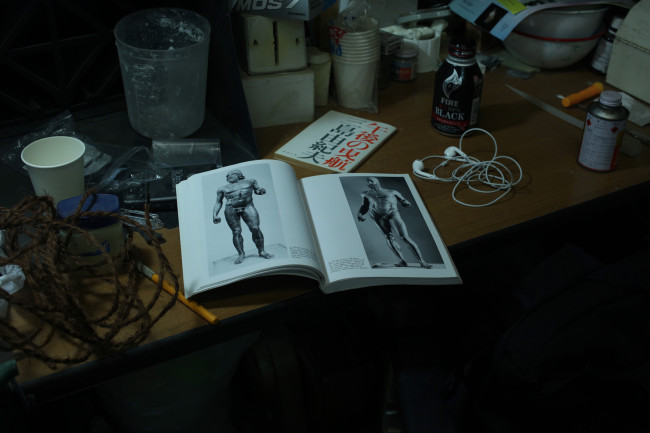
[BODY/PLAY/POLITICS]
Yokohama Museum of Art
Artists: Yinka Shonibare MBE, Yee I-Lann, Apichatpong Weerasethakul, UuDam Tran Nguyen, Ishikawa Ryuichi, Tamura Yuichiro
BODY/PLAY/POLITICS presents contemporary works of art that delve from a variety of angles into images that have been generated throughout history by “the body,” which encompasses the individual human body, our collective actions, and spiritual presences. There is a tendency in our society to label specific bodies as healthy or unhealthy, beautiful or ugly, and to envision certain modes of behavior as representative of the entire group, which we classify such as “typically Japanese.” In other cases, minor deviations from norms or expectations can elicit strange feelings in observers and cause entirely different meanings to be perceived.
In a world cohabited by people with all sorts of skin colors, ethnicities, religions, gender norms and lifestyles, where the colors, forms, or behaviors of individual bodies are not inherently vested with specific meanings, over the course of millennia many value judgments and hierarchies have arisen in societies and are all too often linked to tragedies of history.
The six artists featured in this exhibition are from Europe/ Africa, Southeast Asia, and Japan. Their works express, in poetic and sometimes humor-inflected ways, aspects of history that manifest themselves through the body, looking toward the future and bringing the shapes of new ideas and meanings into view.
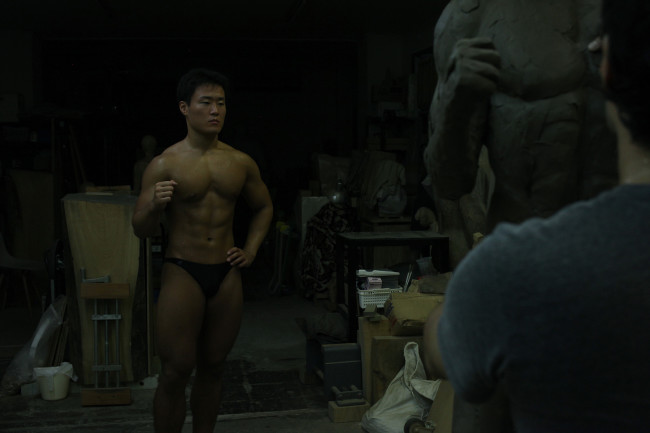
Tamura Yuichiro. Born in 1977 in Toyama, Japan. Lives and works in Atami, Japan.
Tamura delves into the memory and history of localities and transforms these into new narratives that transcend time and space, presenting works that investigate the contemporary significance of past events. This exhibition features his new video installation focusing on the history of modern bodybuilding. Originating in Prussia in the 19th century, modern bodybuilding soon spread from Europe to America and thence to Japan via Yokohama under post-World War II Allied occupation, creating a new image of the body for the modern era. This work delivers a new, unknown story of postwar Yokohama via a new dramatic piece narrated by a fictional storyteller reminiscent of Mishima Yukio.
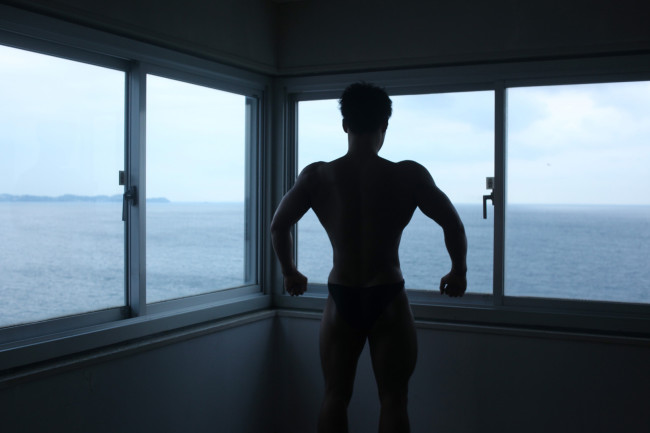

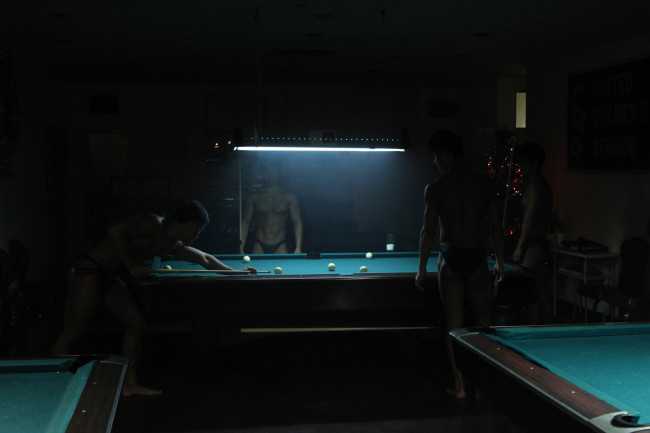
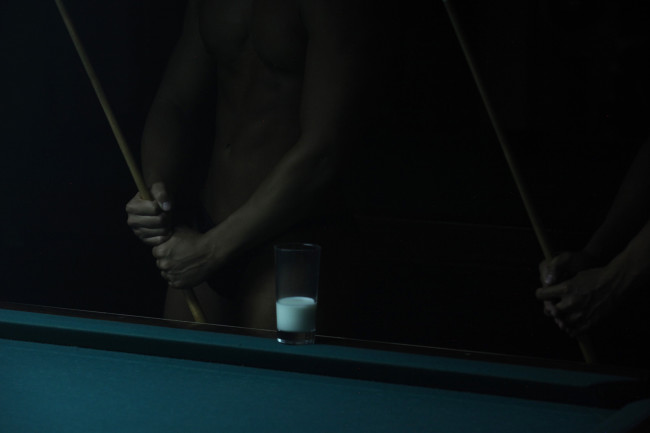
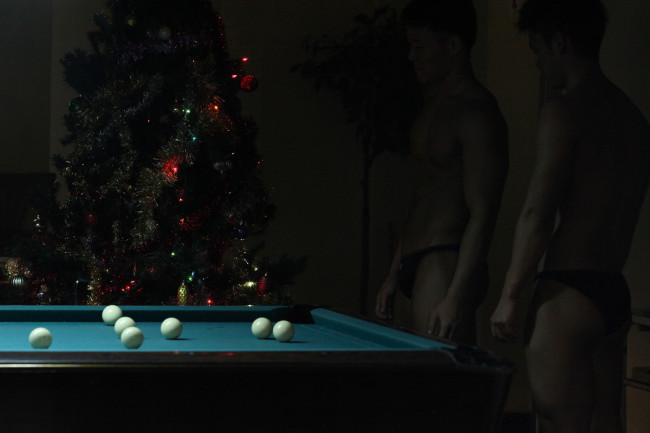
–
In Yokohama, B-29s fly over the skies every night. I heard that there were intense fires in Honmoku. I am very worried.
I heard that ABCD have encircled us, and that petrol will run out. I am very worried.
<A are the Americans, B the British, C the Chinese, and D the Dutch.>
That American big shot who landed in Atsugi with a C-54, MacArthur, he apparently set up something called the GHQ at the Yokohama customs house.
GHQ… The name is somewhat catchy.
<General Headquarters, G, H, Q.>
They say this GHQ requisitioned a metal factory on the north side of the Port of Yokohama and turned it into a milk plant.
I think they used to store petrol in that area, but now they seem to be storing milk.
I guess milk is the new metal, the new petrol. It’s a strange world.
Today, I saw the body of an American soldier as he was walking down the street.
I remember it was very robust and radiant. To be honest, I was enchanted by that body.
Then I understood; what makes that body is neither metal nor petrol, but milk. I was enchanted by that body, that radiant body.
<To drink milk to make the body strong, and for that body to walk around town. America knows that this is a far better propaganda than radios or newspapers.>
Speaking of which, I recently learnt of a certain tribe. In this village, young boys drink the semen of older boys. They do that to make their bodies stronger, and to develop into an adult. Maybe it’s something like the mother’s milk. It’s a tribe in Papua New Guinea.
That story about milk being stored in the reclaimed land swelling out from the Port of Yokohama… That protrusion feels to me like a woman’s breast, or perhaps a scrotum.
<The protrusions in Honmoku: Pier A, Pier B, Pier C, Pier D>
Did you know that there’s a club called Seamen’s Club at the base of Protrusion B? Seamen refers to sailors.
But do you know what happens if you take the letter “a” out of “seamen”? The pronunciation stays the same, but the word changes to “semen,” as in sperm. A club where sperms gather. I don’t think that’s an inaccurate image. This is a seamen’s club. A club where only men gather. I imagine them taking turns to hit white balls.
This happened a while ago.
I went to a Christmas party at the Fryar Gym in Yokohama. There I was given a Christmas present from an American officer dressed as Santa Claus. But I was more taken by the muscular figure of the officer than the content of the present. He was heavily built, large. More than you, father. It seemed that American officers worked out at the Fryar Gym. That’s why there was a faint smell of sweat. I can’t remember what the gift was, but I can recall that officer’s body well. Perhaps you could say that the present for me was their bodies. I’m thinking about working on my body too.
The day after the Christmas party, a ship leaves the Port of Yokohama with a novelist on board. The ship’s name is President Wilson. The novelist, who is coming down with a cold, waves his hand from the ship’s deck. No one knows at this moment that the same hand would be waved again 19 years later, from a balcony in Ichigaya. The novelist is embarking on a round the world trip, which would take him to Greece. There he encounters the “sun” and the “bodies.”
I finally started practicing what’s called bodybuilding. The body is honest. It gains as much muscle as I train. I train three days a week, working on each separate muscle. This muscle today, and this other muscle tomorrow… I can feel my body is gradually changing.
After his return from Greece, the novelist too starts applying himself in “body production.” That is to say, bodybuilding. “I” was the one who coached him. The words of gods in ancient Greece; oracles that cannot be thwarted. In postwar Japan, the equivalent are the words, the commands, the suggestions put forward by the GHQ. The GHQ’s words go as far as to dictate the movements in film, theatre, or kabuki. Even in sword fighting scenes, there was to be no slashing. The novelist, however, slits his belly in the end.
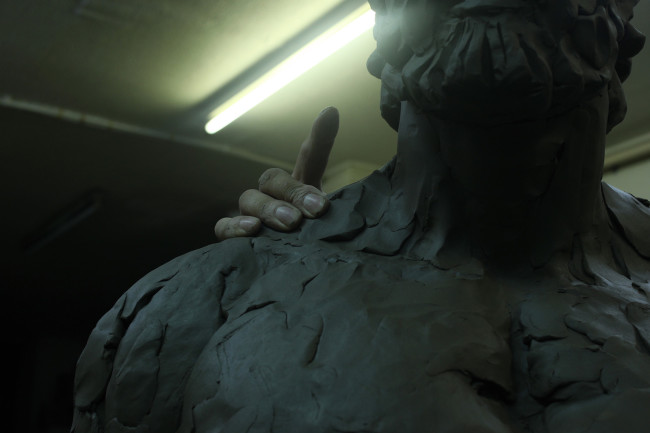
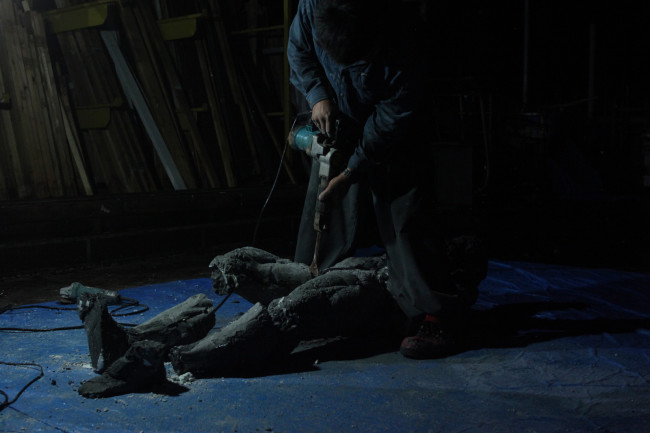
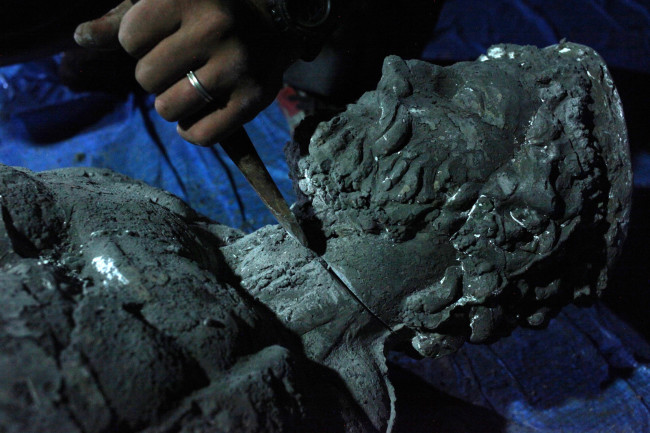
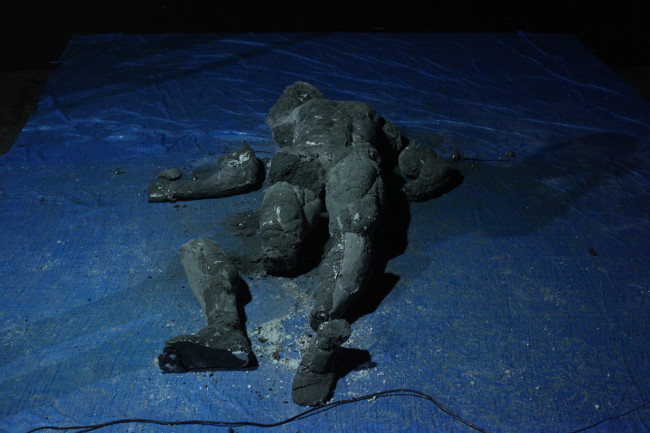
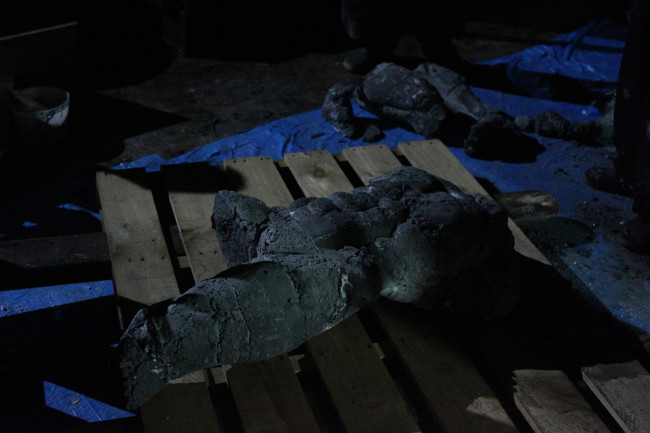
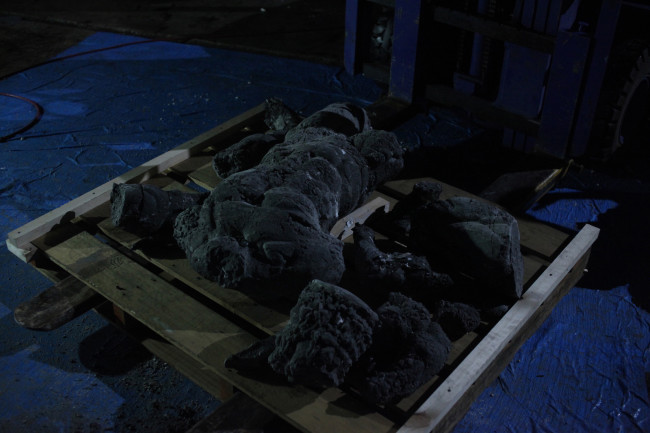
–
Kanagawaoki-shinju Mishima-no-Shiranami
Since medieval times, the three islands off the coast of Kanagawa, have seen many double suicides bound by love, as well as shipwrecks.
Towards the end of the early modern period, Black Ships push into these three islands, marking the dawn of modernity.
The three islands are later occupied by foreign countries, and are used to store cow milk.
Cow milk is exclusively produced for and provided to foreigners, but a young man sneaks into the islands to steal the milk.
The young man drinks the cloudy white syrup every day and as he does so his body changes dramatically.
He makes the body of ancient mythologies his own as a result of the cow milk brought on by the foreigners.
As he grabs a sword in an attempt to disassemble his body, he remembers the oracle by the GHP commanding that “no flesh should be cut by sword.”
The story culminates with the famous scene of the young man’s hara-kiri, and the cloudy white syrup flowing up from his belly.
The syrup turns the sea into a dull white color, causing white-crested waves on the shore.
–
This is a story I heard.
A painter gathered five women to draw one portrait. He did that to combine the most beautiful parts of these women to create the ideal woman. Artists, it seems, can amputate people and reconnect them at will to create the ideal beauty. I feel this story shares something with bodybuilding. In terms of its dismembered thinking about the body.
Apparently, sculptures of only the trunk of the body are called torsos. And the most beautiful among them is said to be the Belvedere Torso. This statue wasn’t shaped like it is from the beginning though, as its arms and legs were severed at some point. The head too. So of course, the sculpture today is far from what the sculptor intended us to see. But what can you do? Everyone says it’s beautiful.
–
(Excerpt from an exhibition text by Tamura Yuichiro)